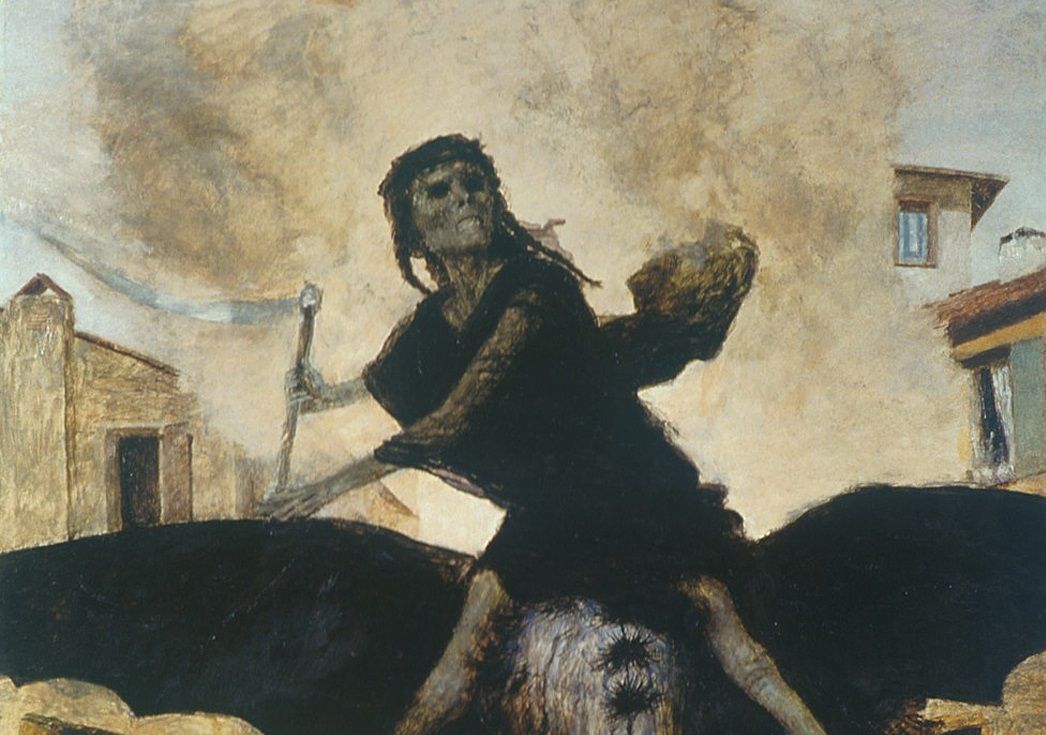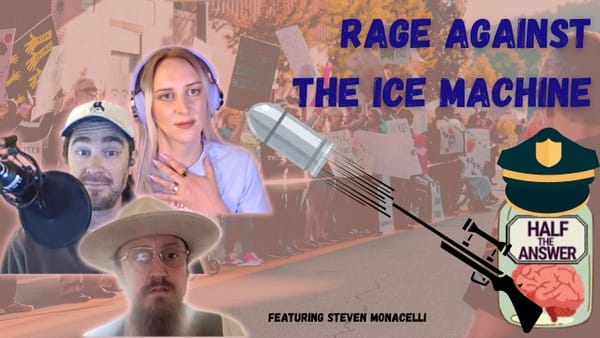Fearing Ourselves: Dignity and Disgust in a Pandemic

As the COVID-19 virus has spread across the globe, a variety of reactions and questions have emerged. Most responses focus on how to confront it. What steps should be taken? What restrictions should governments enforce, while respecting civil liberties and preventing the economy from breaking down? What can private citizens and local communities do? How dangerous is the virus? How much is it spreading and how worried should we be?
Racial animus
Others have focused on causes of the virus. Parts of these discussions have revolved around very real attempts by the Chinese government to cover up the existence of the virus and censor doctors, leading to an extremely incompetent initial response. Another part however, has been the spread of racist fears about the presence of Chinese and East Asian people in other countries. Media across the world have reported a large growth in hostile treatment and/or harassment of people with East Asian backgrounds.
These attacks have been accompanied by rhetoric from President Donald Trump and others centering on the COVID-19’s geographical origins. Despite criticism, Trump, Michael Pompeo, and others have insisted on referring to COVID-19 the “Chinese virus” or the “Wuhan virus.” Some White House officials have apparently even adopted the nick-name “Kung-Flu.” These phrases and other comments are intended to associate the disease with China and Chinese people, to dog whistle racism, and to subconsciously frame Chinese and Asians as Other, dangerous bearers of sickness and contagion.
Defenders have argued that references to geography are commonplace for diseases. They say that discussions of diet are not intended to otherize or negatively construe Chinese people, but to historically mark or recognize roots of the disease. Such claims, while containing a grain of plausibility, disregard or overlook significant problems. Not all diseases with geographical names were or are labeled as such for practical reasons, but due to the insufficient spread of scientific terms, by accident (as in the Spanish flu), or as I’ll discuss, bigotry.
Furthermore, usage by Trump and his squad have been accompanied by avoiding neutral, readily available scientific terms such as “coronavirus,” “COVID-19,” or (for the truly particular) “SARS-CoV-2.” Explicit demonstration of racial animus was revealed in a defense by Republican Senator John Cornyn:
China is to blame because the culture where people eat bats and snakes and dogs and things like that, these viruses are transmitted from the animal to the people and that’s why China has been the source of a lot of these viruses like SARS, like MERS, the Swine Flu.
Crucially, while many diseases and infections are zoonotic (spread from animals to humans) such as rabies, anthrax, brucella, avian flu, and others, the focus on China is not a function of that fact. Rather, it is a hypocritical double standard, under which the only problematic culinary practices are those of foreign cultures. Indeed, many Western foods equally spread disease or harmful bacteria, such as e-coli, salmonella, trichinosis, and others. Notably however, Cornyn, Trump and others have never attacked the mass consumption of beef or pork as responsible for the spread of prior global health crises. Furthermore, so-called “Chinese” food such as snakes, frogs, insects, and bats are not culturally unique and exist as dishes in multiple places across the world. Most tellingly, two of the pandemic diseases mentioned by Cornyn—swine flu and MERS—do not have Chinese origins but began in Mexico and Saudi Arabia respectively. This suggests that emphasis on China is a function of racial prejudice.
When examined historically, the current focus on culture or geography mirrors the xenophobia often applied to other diseases and pandemics. European Christians were quick to blame bubonic plague, or the “Black Death,” on their Jewish neighbours. Ebola was soon faulted on Africans, as was SARS on East Asia. More general stereotypes and fears about disease, dirt, and contagion have been projected onto minority and immigrant groups across the world, including Irish, Irish Travelers, Italians, Greeks, Jews, Romani, Native Americans (North, South, and Central) Pakistanis, Indians, Chinese, Japanese, Koreans, Romanians, Poles, Russians, North Africans, and many others.
In The Guarded Gate, Daniel Okrent documents how rhetoric about the cleanliness of migrants was commonplace among immigration restrictionists and racists, both in the United States and other parts of the West during the late 19th and early 20th centuries. Such language was often paired with eugenicist or other racial and ethnic theories, attributing inherent biological differences or inferiority to minorities. One need only consult prominent histories or primary texts of eugenics, race theory, anti-immigration, or anti-minority sentiment to note the common practice of describing out-groups as having problems with cleanliness and harboring disease.
Sickness and self-image
Thus, themes of xenophobia connected to sickness and poor hygiene are common in human history. More significant however, and I think less considered, is the cultural significance of these ideas. To understand why xenophobia is so frequently couched in terms of health, or diseases blamed on outsiders, it’s important to think about what disease represents.
Our cultural relationship with disease is an extremely negative one. Not only because of the practical effects it has on our health, but on what disease can do to our self-image. As human beings, we have a sense of being set apart from the rest of the animal kingdom, even in our relative physical vulnerability. Our capacity for self-awareness, combined with our capacity for abstract thinking often gives us a sense of psychological distance from our animal cousins. We see ourselves as mental or even spiritual beings, distinct from the rest of nature.
The practical defenses developed by modern medicine have reinforced this sense of separateness, as well as a sense of purity. We can see this when we think about the concept of dignity in human culture. Dignity is often talked about as a synonym for respect, but this is to simplify a more complex feeling and concept. To be dignified means to be set apart. Dignity has a transcendental quality. There is a sense that to be dignified is to be raised above material or instrumental matters in favor of some higher purpose, station, or meaning. It arguably emerges from the notions of holiness present in Abrahamic religious traditions, but altered in the transition to our modern secular context. Notably, the word for “holy” used in the Hebrew Bible is “kadosh” (variants: “kodesh” or “kedushah”) which means “separate” or “different.”
Historically, this separateness was believed to follow a set of gradations, which comprised the “Great Chain of Being.” In this view, people were thought to rest in a metaphysical hierarchy stretching down from God and his angels, through the clergy, to kings and nobles, then local lords, tradesmen, and finally serfs. Below serfs were animals, plants, and minerals. Notably, the humans at the bottom of this hierarchy were the closest to the animals and furthest away from God, lacking the dignity held by the upper classes.
In “Dignity, Rank, and Rights,” the political and legal theorist Jeremy Waldron argues that the idea of universal human rights required the broadening of dignity from a select group to the whole human race. Rather than dignity and rights emerging from social status, rights were now a function of species status, built on features such as ability to reason and a moral sense. Following the concept of dignity as transcendental separation, the framework of human relationships, especially in economically advanced liberal democracies, relies on the sense of ourselves as elevated agents and producers of value. Modern dignity therefore (imperfectly) dispenses with the Great Chain of Being, treating humans as a single class, but one still separate from the natural world.
While universal dignity is much more egalitarian, the unintended effect of collapsing social distinctions among humans is to leave human and non-human as the only distinction of dignity left. It should be unsurprising therefore, that debates about animal rights and welfare have become more fervent following legal and social recognition of racial, religious, sexual, and gender minorities. While the widening of dignity has affirmed human value, the lack of any internal hierarchy only highlights our sense of self as partially based in differences from non-human creatures. To see ourselves as capable of ailment, in this context, is to see ourselves as undignified, weak, and no more capable of transcending our material selves than animals. This poses a threat to our personal sense of worth. As a result, our notion of extreme separation, which distances us from our physical selves, often prevents us from recognizing or fully acknowledging the impact of ordinary biological, chemical, and physical processes on our ability to survive and flourish.
Invading the body
Because we experience such a profound disconnect between our self-image and our reality, we are quick not only to examine the biological nature of illness, but to frame its emergence as part of some larger narrative, to metaphorize it. The urge to metaphorize is a function of the psychological discomfort with being vulnerable. If I am susceptible to something so primitive as disease, it must be because I or someone else is deeply flawed, rather than because such threats are inherent to our world.
As mentioned, discomfort with frailty and disease pushes us towards a need to metaphorize. More broadly, such discomfort leads to the assignment of blame. After all, if my status as a human being is to be above material concerns, then the only way I could have been infected is by a corruption of this status. From this we get the opposing emotion to dignity—that of disgust. We often feel revulsion at those things that transgress our experience of separateness, categorizing them in distinct moral terms. We dislike the sense of impurity and violation that comes from mixing elevated things with those deemed non-elevated.
I believe this point lies at the heart of why disease and cleanliness occur with such regularity as racial descriptors, metaphors, and criticisms. It is also why xenophobic forms of blame are often assigned during pandemics. Firstly, the perception of other groups as lesser, inevitably pressures towards a denial of their common humanity. We do not permit the process Waldron describes from happening, by seeing an outgroup not as fellow humans, but as animals, far from being like us. In doing so, we often see the physical bodies of outsiders as degraded or infected. It is not accidental that African Americans have been and are routinely caricatured as monkey or ape-like, or that Jews are often portrayed with or analogized to cockroaches, fleas, or rats.
Secondly, the need to explain our susceptibility to disease leads to scapegoating. In the search for an affirming narrative, outsiders become the carriers of cultural disease, corrupting and infecting the societal “host”. Here, we frame outsiders as a group of pathogens degrading and infecting our social body. This cultural infection is blended together in the mind with poor hygiene and illness as part of the process of dehumanization.
Crucially however, socially constructed characteristics like cultural otherness or racial inferiority are also linked together with physical elements. This functions as an endless tautology: We cannot accept foreign group x. If we had not been exposed to foreign group x, then we would not have gotten sick, because foreign group x are biologically or socially inferior and invite disease. Because they are foreign, they are unclean or biologically degraded. Because they are unclean or degraded, they invite disease, which is why they cannot be accepted.
Racial, cultural, or religious unfamiliarity represents a threat to our dignity, because it poses a threat to the sense of separation, and thus the elevation of a pure, uncorrupted, organic social whole. Outsiders are not merely unfamiliar, but parasites on our cultural “host,” invaders bearing threatening identities which we seek to concretize as not only socially problematic, but as physically harmful. Attacks on outsiders are thereby rationalized as a social immune system, destroying or forcefully integrating those that are not of the body.
Dignity’s future
A dilemma emerges. If crude disgust reactions are a product of dignity, then how beneficial can this concept be? Is dignity nothing more than artificial sacralization, prompting primitive social categories and divisions? Many have come to think so, and it is not hard to see why. With acerbic wit, Stephen Pinker has forcefully critiqued the deep revulsion of many social conservatives, especially bioethicists, to any type of human medical enhancements. He has particularly strong words and special amusement for the discomfort some conservatives carry towards extremely mundane physical acts in the name of dignity. An especially notable absurdity is the view of Leon Kass, former chairman of the President’s Council on Bioethics under George W. Bush, that human dignity has been heavily disrespected by the pervasive licking of ice-cream cones in public. Pinker argues for replacing the value of dignity with autonomy and norms of interpersonal respect.
However, social problems and intellectual silliness are not required in order to maintain an idea of dignity. This effort is important because, as Waldron has argued, dignity is an important intuition for undergirding the very autonomy and respect defended by Pinker. Yet even if dignity lacks this philosophical use, then conceptual rehabilitation is still an important goal. Dignity’s heavy embeddedness in the West and many other cultures should prompt us to find a better way to see and understand it.
One answer is offered by the philosopher Martha Nussbaum. In “Hiding From Humanity,” she argues that our dichotomy between material and mental or psychological dimensions is damaging and unnecessary. It fuels our sense that material concerns are somehow too animalistic and “base”, thereby lacking in dignity and human worth. On her account, one reason for discrimination against LGBTQIA+ people, sex workers, and similar communities, has been a sense of cultural and moral wrongness and polluting degradation in the embracing of certain physical needs or desires. This claim holds empirical support.
For Nussbaum, by shaming sexual minorities and sexual services and viewing them with disgust, we are denying that their actions and identities reflect reasoned and ethically considered judgements. In this regard, we are ignoring and denying support for their dignity. Nussbaum’s answer is to integrate our physical as well as our mental and psychic dimensions into the notion of dignity. Others have offered powerful defenses of sex work and sexual expression on this basis. Conversely, Nussbaum argues that disgust and shame are extremely poor, wholly irrational bases for making law and forming norms, due to their function as conduits for insecurity and fear of our animal nature. Instead, we should both politically and intellectually disbar disgust and shame in favor of emotions like empathy, compassion, anger, and some forms of fear, which she says are capable of attaching publicly contestable, rational arguments.
Nussbaum’s view may be somewhat insufficient. Arguably, the intellectual and cultural dichotomy between our material and mental selves is just entrenched as the ideas of dignity and disgust, stemming back to the ancient debate about whether our mind and body have a dualistic or monistic relationship. More significantly, Nussbaum offers an unclear notion of how an elevated status can function without its opposite. Additionally lacking, is a thorough account of a related question – how might moral judgement or condemnation work in disgust’s absence? Nussbaum also appears to hold that various emotions can be emphasized or diminished solely on the basis of their usefulness for making articulable, reasoned judgements. This suggests a high confidence about the rational functions of some emotions over others, as well as assigning humans with perhaps implausibly robust powers of psychological autonomy.
Regardless, the issues of dignity, disgust, and tolerance remain. Such ideas are not ivory tower dilemmas, but serious cultural concepts that pose both benefits and challenges to respect, inclusion, and social cooperation. It is not unimportant that figures such as Kass not only promote dignity, but actively encourage feeling disgust and repugnance. As I’ve discussed elsewhere, the rise of rightwing nationalism and populism have shown the centrality of dignity and status to political life. This phenomenon has gained further ground as a result of COVID-19.
Currently, the social costs of disgust are illustrated not only by rising attacks on Chinese and Asian people, but also through unscientific, regressive policies like the US’s ban on blood donations from gay men with a recent sexual history. Denying these donations is not a minor concern. In addition to being discriminatory, the ban impedes access to a vital treatment for highly vulnerable patients. The blood of those who have recovered from COVID-19 can be harvested for plasma. Since they have already fought off the virus, their plasma contains powerful antibodies capable of binding and destroying the virus. This is a key therapy for weaker patients currently dying or in grave danger from the virus, who lack the internal defenses to fight the virus successfully. As blood donations are undergoing a severe shortage, every contributor is a valuable asset.
Recognizing these negative dimensions make conversations about dignity and disgust essential. It is imperative that we take a long, hard look at the values and practices which govern our societies, and evaluate them in a serious, nuanced way. Through dialogue, we can make a real, if gradual impact on how we understand our values and manifest them. As with most social questions, discussions and experimenting with norms will help us to constructively reassess the meaning and role of dignity in culture, creating opportunities for positive social change.
Featured image is The Plague, by Arnold Böcklin




